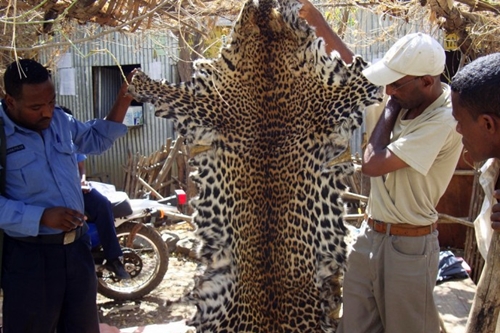12 May 2016. A handheld device for analyzing DNA can be used on the scene to identify products with endangered wildlife, to help stop poachers and smugglers of those species. A team from University of Leicester in the U.K. that devised this solution is the recipient of a $10,000 prize in the Wildlife Crime Tech Challenge, an initiative of the U.S. Agency for International Development, or USAID.
Trafficking in endangered wildlife species is a growing and multi-faceted problem with far-reaching economic and ecological consequences. The demand for products from elephants, tigers, rhinos, pangolins (a type of anteater), turtles, sharks, parrots, and others are pushing these species into extinction. The non-government organization Traffic that monitors commerce in endangered species estimates the value of this trade by organized criminal gangs at $19 billion per year. Trade in illegal ivory alone, says the organization, grew nearly 300 percent from 1998 to 2011.
USAID — with Traffic, National Geographic, and Smithsonian Institution — began the Wildlife Crime Tech Challenge to find new methods for applying science to tackle this growing problem. The program sought new solutions for tracking transit routes, collecting forensic evidence, reducing consumer demand, and fighting corruption that often supports wildlife poachers and smugglers. The challenge’s first round resulted in 16 finalists, with each receiving a $10,000 prize.
Leicester’s team, headed by Jon Wetton, a director of the university’s forensic genetics lab, is one of the finalists. Wetton studies migration patterns using DNA sequencing to track modern population movements, as well as bird migrations. His techniques, however, have also been used in criminal investigations, most notably a case in 2013 where an analysis of pet cat hairs transferred between suspect and victim provided evidence that led to a murder conviction.
In the Wildlife Crime Tech Challenge, Wetton and colleagues propose using the MinIon DNA sequencing device to analyze DNA at poaching or smuggling crime scenes. The MinIon is a portable disease surveillance system that analyzes DNA from blood samples in the field, returning results in as little as an hour, and operates as a plug-in peripheral on a laptop computer. Oxford Nanopore, maker of the MinIon, is a partner with Leicester on this project.
The MinIon technology forces single strands of DNA through nanoscale pores, which makes it possible to analyze samples in real time. The Leicester team will also adapt a related Oxford Nanopore device, called VolTrax, that prepares biological samples in the field for MinIon analysis. These technologies will test for characteristic DNA markers identifying endangered wildlife species on poachers’ weapons or in product supply chains and markets.
“We hope to demonstrate proof of concept within a year,” says Wetton in a university statement, “with a view to working on it further so that the method is more broadly useful in the field. This initial grant will help demonstrate how the test could be used to detect traces of elephant and rhino blood in poaching cases once the device is fully developed.”
The Leicester team expects to collaborate with the Kenya Wildlife Service and Panthera, an organization conserving 38 endangered species of wild cats, such as leopards. The researchers will now compete for one of 4 grand-prize awards of $500,000 to further develop the technology.
Read more:
- Genomics, Data Tools Track MRSA Outbreaks in Europe
- Genomic Variations Reveal Cholesterol, Heart Disease Risks
- Software Detects DNA Mutations in Single Cells
- Study to Test Increasing Ethnic Genetic Disease Diversity
- 23andMe Creates Research Software for iPhone Apps
* * *


 RSS - Posts
RSS - Posts
You must be logged in to post a comment.